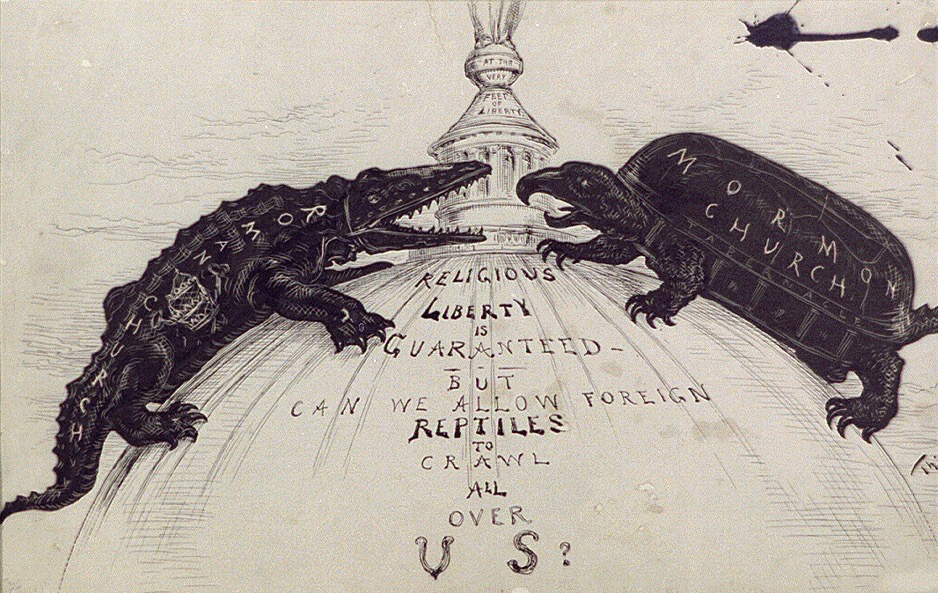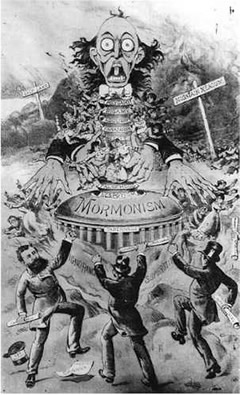Anti-Mormon Art
The hostility toward Mormons in the second half of the 19th century was intense, and often focused on polygamy. The small type on the sword and rifle indicate “The Only Sure Way” that Uncle Sam can rid us of the “mormon vermin.” The small type says, “Heroic Measures” and “Extermination.”
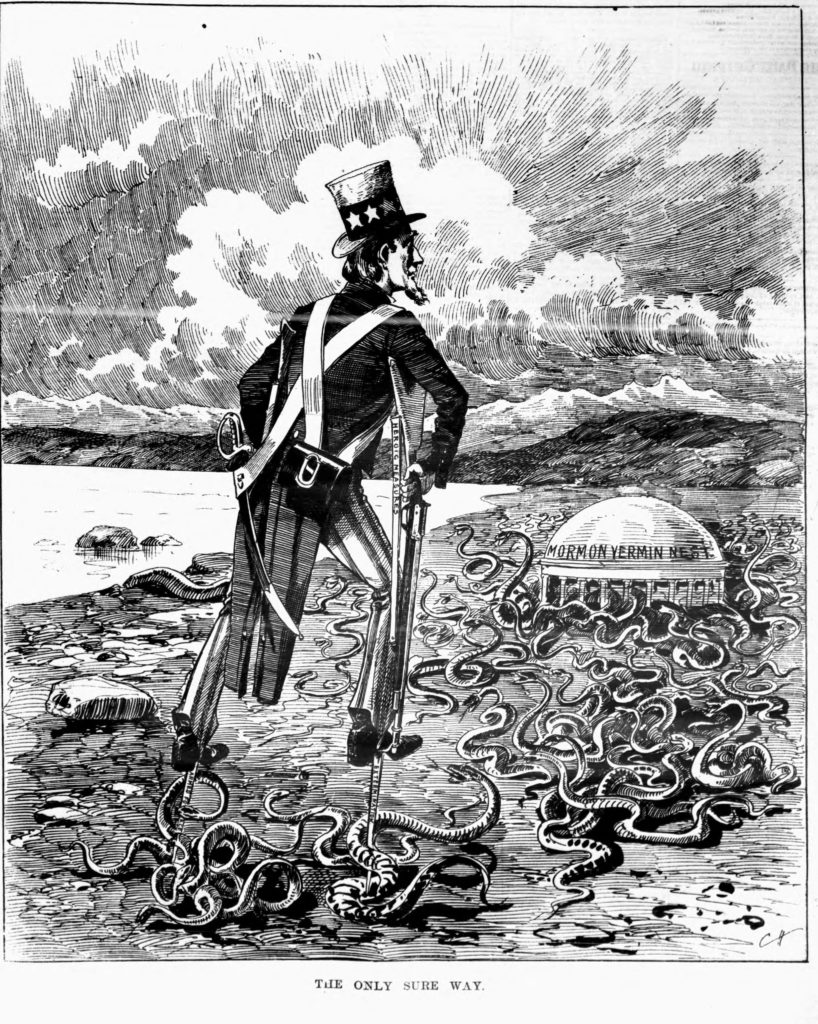
This one is hard to get one’s head around. Mormons were consider, well, not white. This was partly because they embraced polygamy, which was viewed as Asiatic or African. In a presentation at the New Orleans Academy of Sciences in 1861, military doctor Robert Bartholow described a typical polygamist: “yellow, sunken, cadaverous visage; the greenish-colored eye; the thick, protuberant lips, the low forehead; the light, yellowish hair, and the lank, angular person, constitute an appearance so characteristic of the new race, the production of polygamy, as to distinguish them at a glance.” This context explains the otherwise perplexing comment from Mormon leader Heber Kimball that “we are not accounted as white people.”
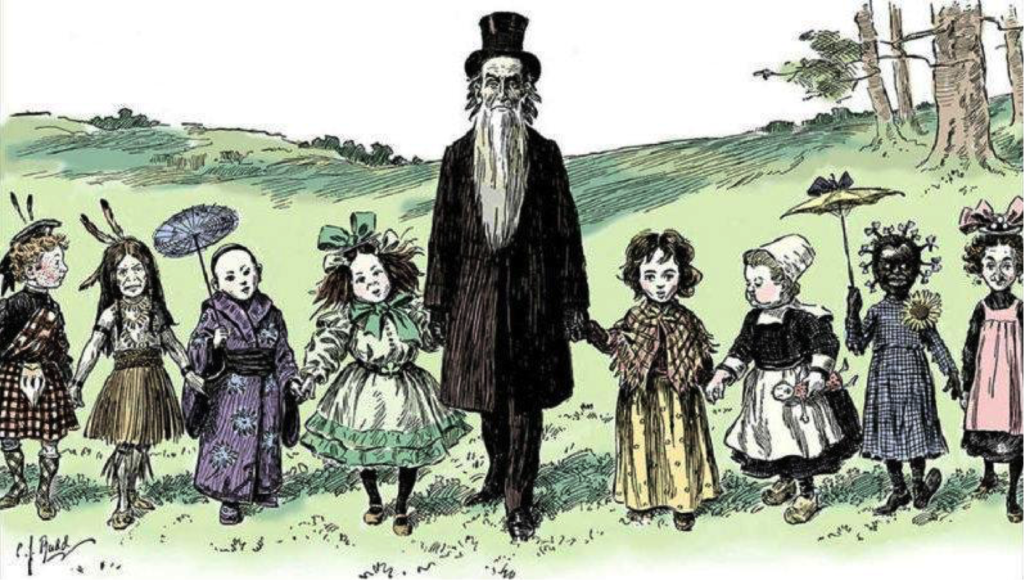
Mormon women were depicted as poor and helpless. Here they are “sealed” to their polygamous husband. Off in the left is a sign, “Mountain Meadows,” referring to one of the darkest chapters of Mormon history, when a group of Mormon settlers in Utah massacred another group traveling through the area (during a period when the federal government was bearing down on Mormon). The future for these women, according to this cartoon, was bleak.
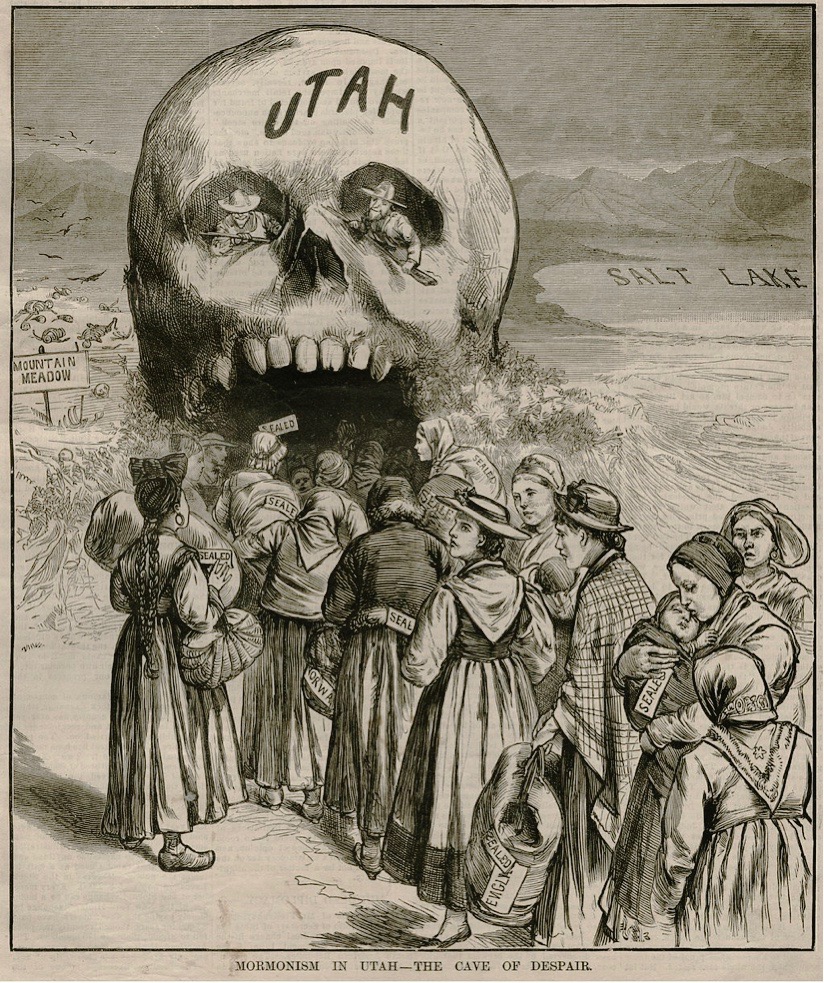
After Utah was accepted into the union, there was still a big fight over whether to seat the Senator, Reed Smoot. They held hearings to prove that many Mormon leaders were still practicing polygamy. Some believed it was a travesty that Mormons were allowed in Congress.
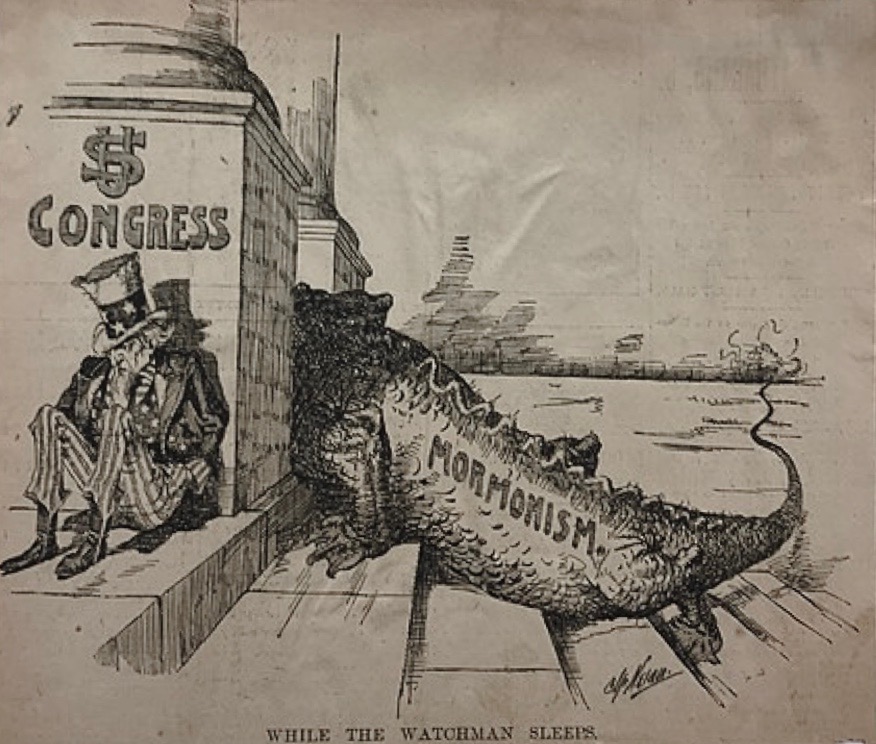
A key argument against polygamy was that it was enslaving women. Mormon women objected to the portrayal. To counter the argument that polygamy enslaved women, Mormon wives testified by the hundreds in support of the tradition. “Our enemies pretend that in Utah, woman is held in a state of vassalage—that she does not act from choice, but by coercion—that we would even prefer life else- where, were it possible for us to make our escape,” Eliza Snow declared. “What nonsense!” Martha Hughes Cannon advanced a decidedly feminist argument. Sharing the burden of matrimony with other women, she said, freed up time so she could become both a physician and a state senator. “A plural wife is not half as much a slave as a single wife,” she said.
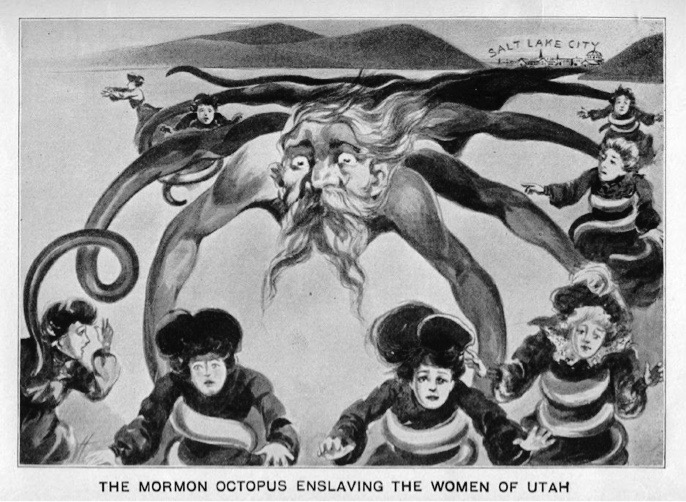
The final nail, it was thought, was a Supreme Court ruling that upheld an anti-polygamy law.
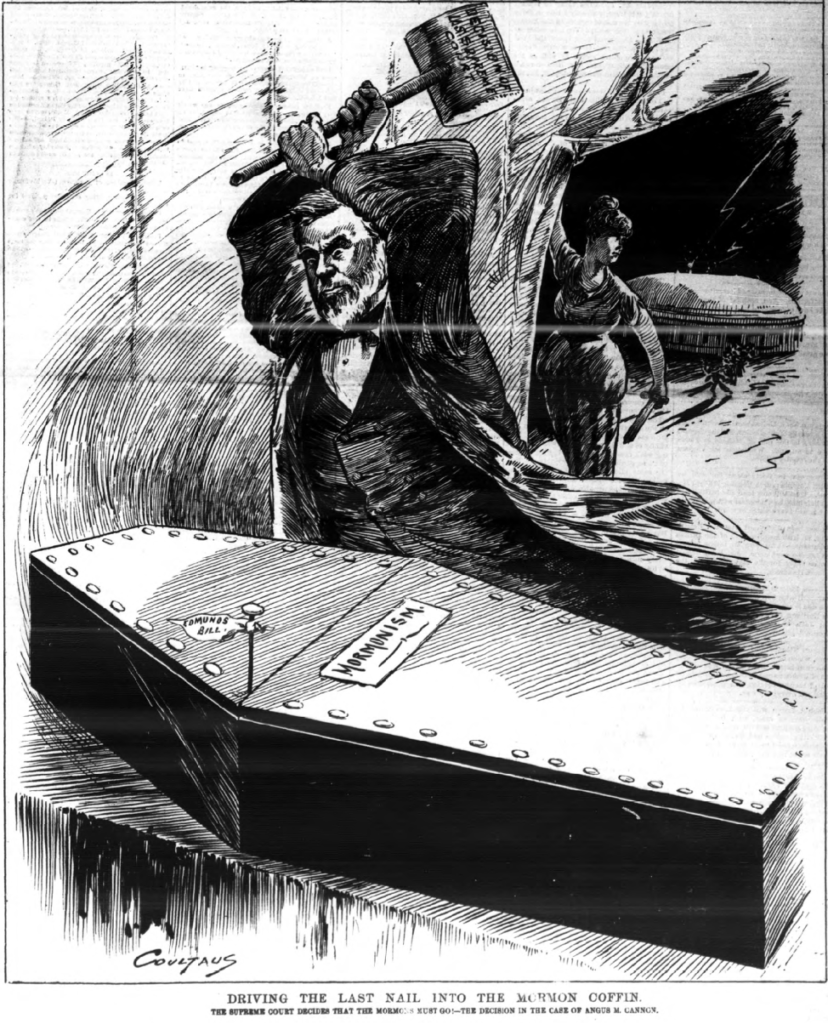
This is one of my favorites. In the second half of the 19th century, Catholics and Mormons were held in comparable contempt — and in both cases considered “foreign.”
